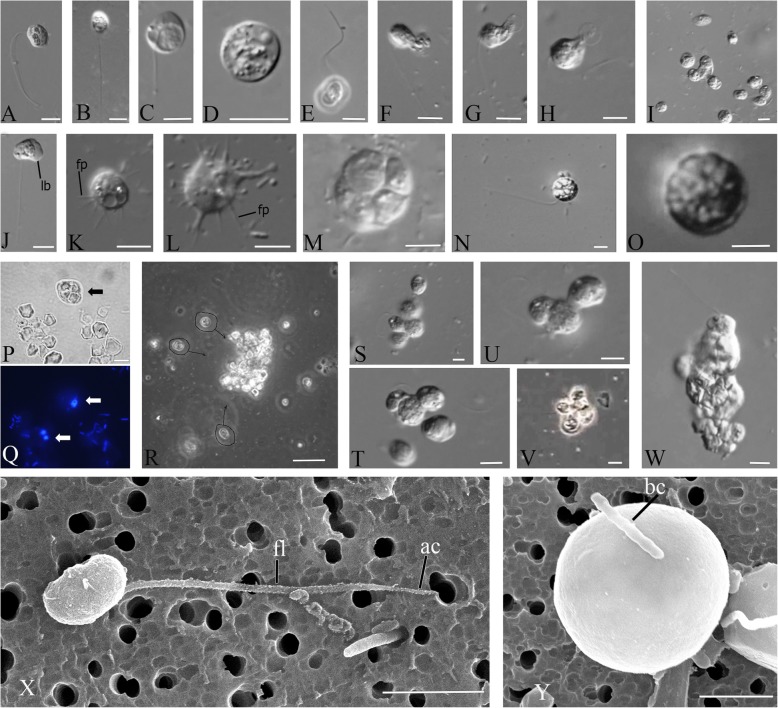Fig. 2.
External morphology and life forms of Syssomonas multiformis. a–c Swimming flagellated cells. d Cyst. e Attached flagellated cell. f–h Sucking of eukaryotic prey. i Simultaneous joint feeding of three cells of Syssomonas on one prey cell with attraction of other specimens to the feeding spot. j Amoeboflagellate. k, l Amoeboid cell. m Palintomic cell division inside the cyst: the number of observed daughter cells was always even, and up to 16 daughter cells have been seen. n Cell with inside vesicles. o Cyst with vesicles. p, q Cells of Syssomonas (arrows) with engulfed starch granules (bright field (p) and fluorescent microscopy, DAPI staining; arrows are pointing to Syssomonas cells). r Cells of Syssomonas with engulfed starch granules hiding into the starch crystals druse (circles and arrows show life cells of Syssomonas floating towards the starch crystals druse). s–u, w Cell aggregations of Syssomonas near the bottom of Petri dish. v Floating aggregation of flagellated cells. x General view of flagellated cell (scanning electron microscopy, SEM). y Cyst (SEM). ac, acroneme (pointed tip of flagellum); bc, bacterium; fl, flagellum; fp, filopodium; lb, lobopodium. Scale bars: a–p, s–w 10 μm, r 45 μm, x 3 μm, y 2 μm

